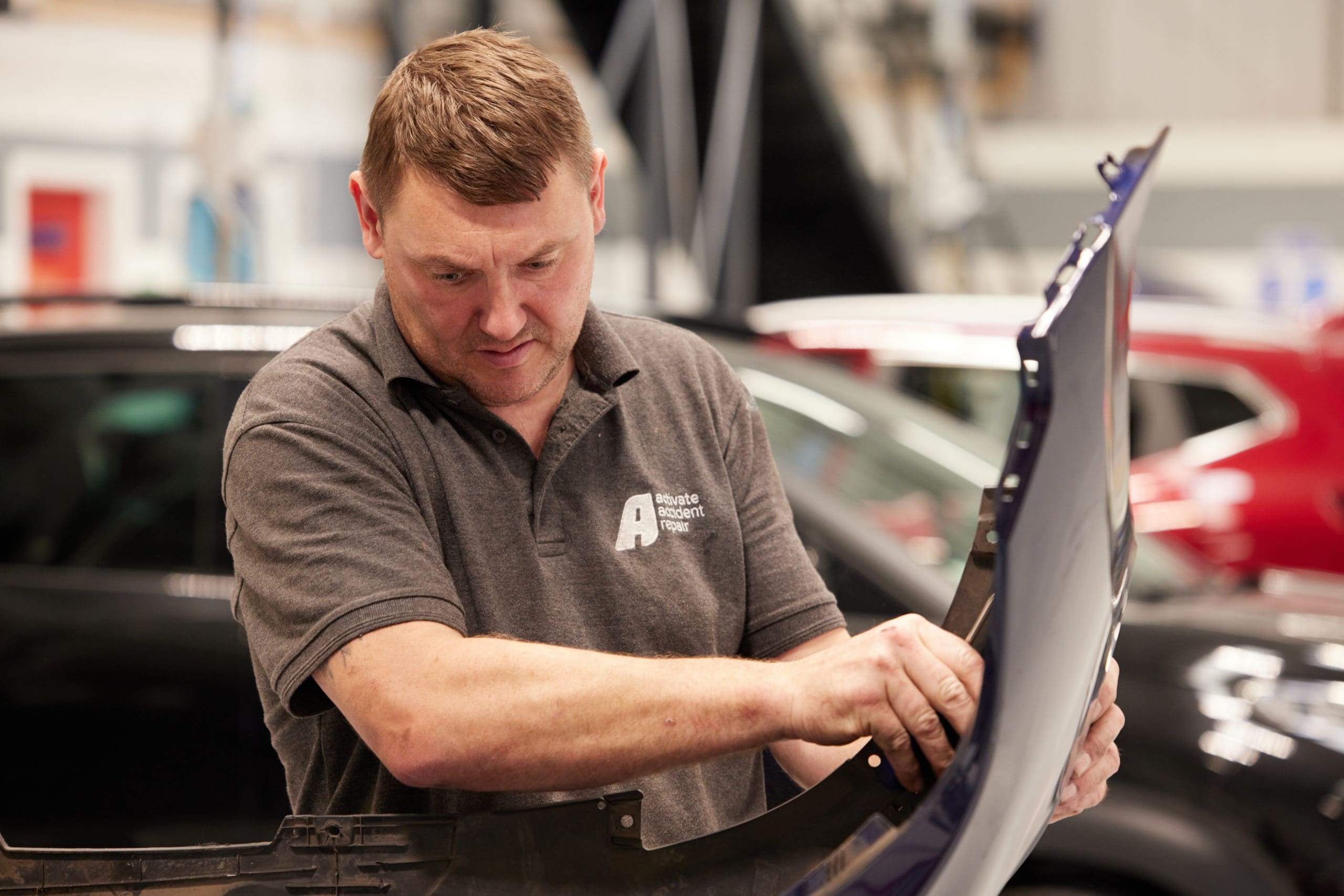Most modern cars include some plastic parts – bumpers in particular are usually made of plastic.
So, what happens when your plastic bumper gets damaged? Can it be repaired, or does it need to be replaced with a new part? Here, we discuss the benefits and practicalities of plastic repair.
Can you repair a plastic bumper or part?
Yes, depending on the extent of the damage.
Vehicle Repair Technicians use specialist tools to fix scratches, dents, holes and chips on a bumper. They can also paint or blend the repair so it’s invisible to the eye.
If a bumper has been severely damaged, a replacement will be ordered to ensure a safe, high-quality repair.
How do you decide whether to repair or replace a damaged part?
Highly trained Vehicle Damage Assessors (VDAs) decide whether a part should be repaired or replaced based on a number of key factors:
1 Safety
Safety is the number one factor in decision making. Parts will always be replaced if:
- Manufacturer guidelines advise replacement.
- The underlying structure of the part has been damaged.
- Repair could affect the vehicle’s safety systems and sensors.
2 Cost and time
The VDA estimates the number of hours needed to repair a part and compares this to the cost of ordering new. They will also look at parts availability to see how long a new part will take to be delivered.
This allows them to identify the most cost-effective and efficient option.
3 Sustainable repair
We repair plastic parts wherever it’s safe and realistic to do so in line with our green repair principles.
How do you repair a plastic bumper?
Damage repair takes place in a number of stages.
For minor scuffs or scratches it may be possible to use SMART repair techniques. This method focusses on a small to medium area of damage and does not require parts to be removed from the vehicle.
To repair more extensive damage, the bumper (or other plastic part) is removed from the vehicle.
It is reshaped, and dents are pulled out using specialist suction tools. Holes are filled and sanded, and welding tools are used to repair cracks.
The part will then be painted to match its original colour so that it looks as good as new before being fitted to the vehicle.
All safety features are reset to manufacturer specifications before the vehicle is returned to the customer.
Take a look at a plastic bumper repair in action here:
What are the benefits of repairing a plastic bumper?
For minor damage, plastic repair is a safe and cost-effective option. It can also speed up the repair process if parts availability is low.
Plus, there are significant environmental benefits. Repairing a plastic part avoids carbon emissions from new part manufacturing and reduces plastic waste.
At Activate Repair we work to a set of green repair principles and aim to repair over replace wherever possible. If it isn’t safe or practical to repair a plastic bumper it is sent to be recycled.
In summary
Plastic repair technology means that parts like bumpers can often be repaired. Plastic repair is a safe, cost-effective and environmentally friendly option.
At a bodyshop, highly-trained Vehicle Damage Assessors make the decision on whether to repair or replace parts based on safety, cost, efficiency and sustainability.
Minor damage can be fixed using SMART repair techniques. To complete a larger plastic repair, trained technicians:
- Remove the part from the vehicle.
- Reshape, fill and sand holes, and use welding tools to repair cracks.
- Paint to ensure the repair is invisible.
- Replace the part and reset all safety features.


Leave a Reply